Build Quality
As we already know the ROG STRIX 750W features a single 135mm fan design that is used in the same vein as 120mm fans in that these can provide for quiet cooling environments due to the ability to move a larger volume of air at slower speeds than a smaller diameter fan. The 135mm fan is just about the largest diameter fan we are likely to see in ATX power supplies given the physical constraints of the form factor. While great for quiet computing environments the key criteria in our evaluation is whether or not the cooling solution is sufficient, not necessarily it’s sound output level or form factor, although we certainly listen for offending units.
External Build Quality

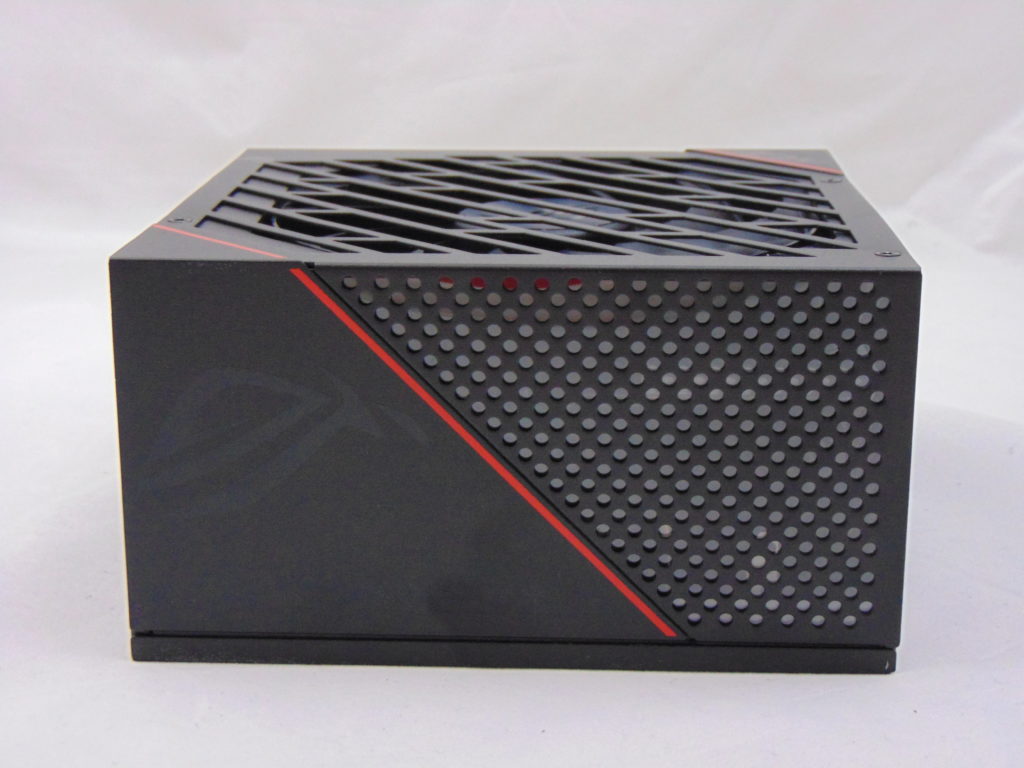
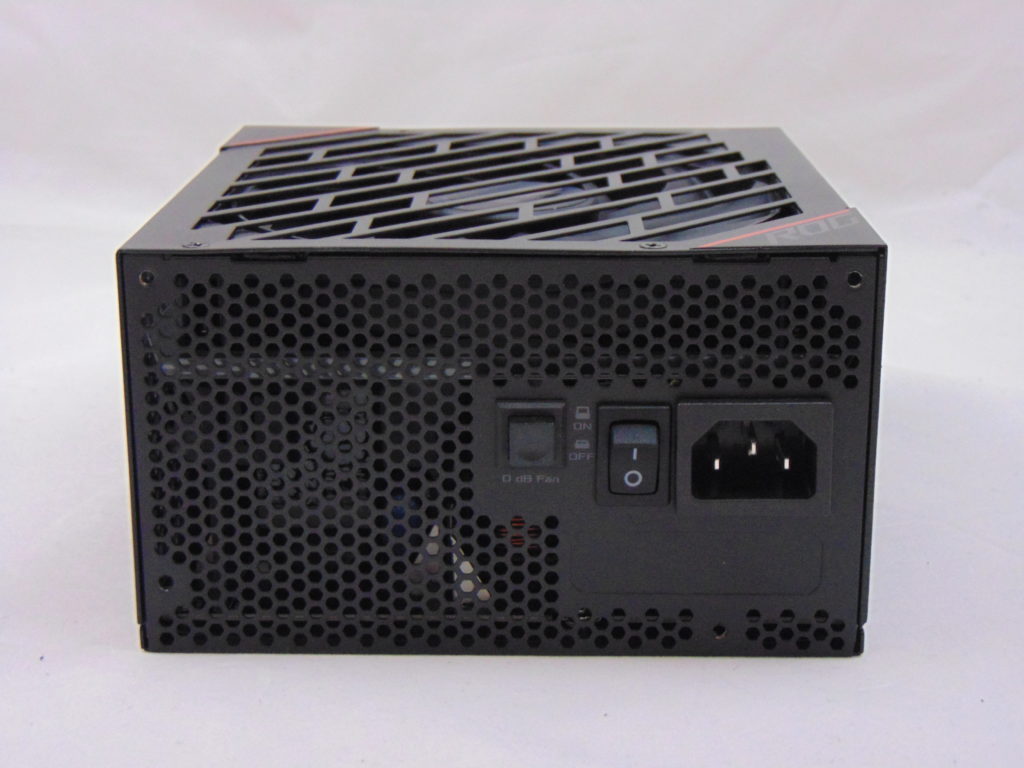
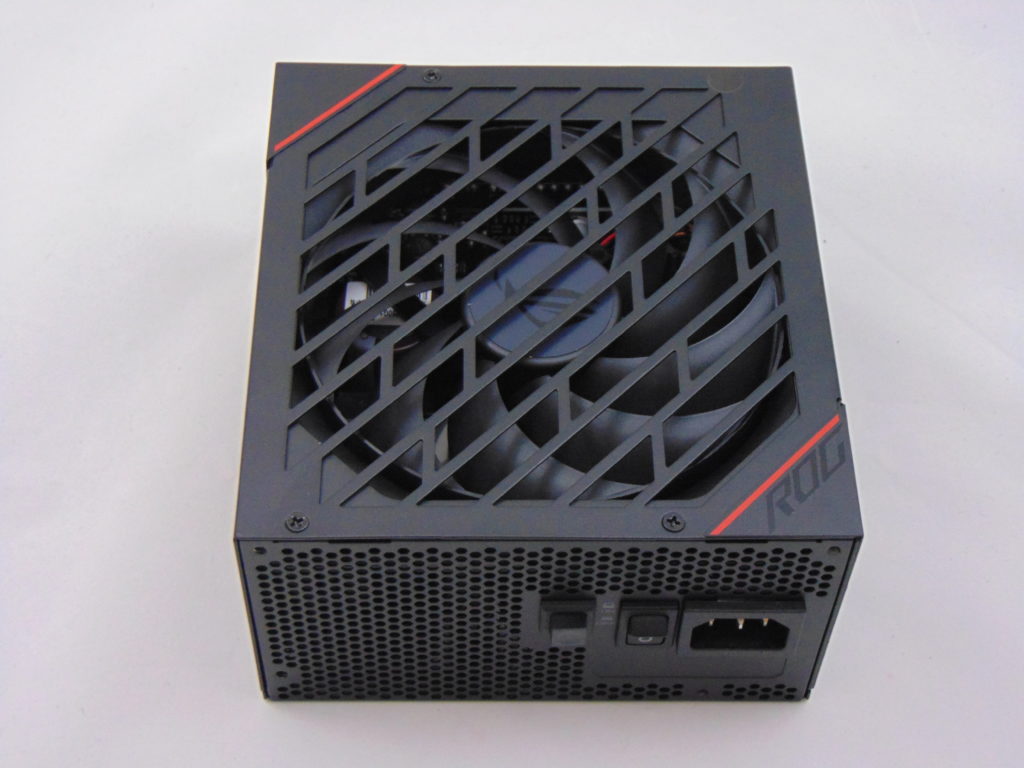
The exterior of the ROG STRIX 750W is similar to what we saw from the ROG THOR 850W but a little simpler. Rather than having an OLED display as our standout feature, today, we have interchangeable stickers for your pleasure and branding needs. The layout is traditional for a fully modular unit with an overhead fan in the ATX12v/EPS form factor. Cosmetically, the unit carries the ROG branding in a mixture of grey/silver text and red/silver accents. The branding is nice and a bit more subtle than the aforementioned ROG THOR. The modular interface is well labeled in the manner we see from many Seasonic OEM units. Rounding things out, the unit has a durable black finish that is slightly textured.


The ASUS ROG STRIX 750W comes in at a total length of ~6.25 inches while the cables come in at a length of ~24″ to 39″ to the first, or only, connector. Additionally, the cables are a mix of standard wire loom and FlexForce style cables which is excellent as the unit is fully modular.
Internal Build Quality
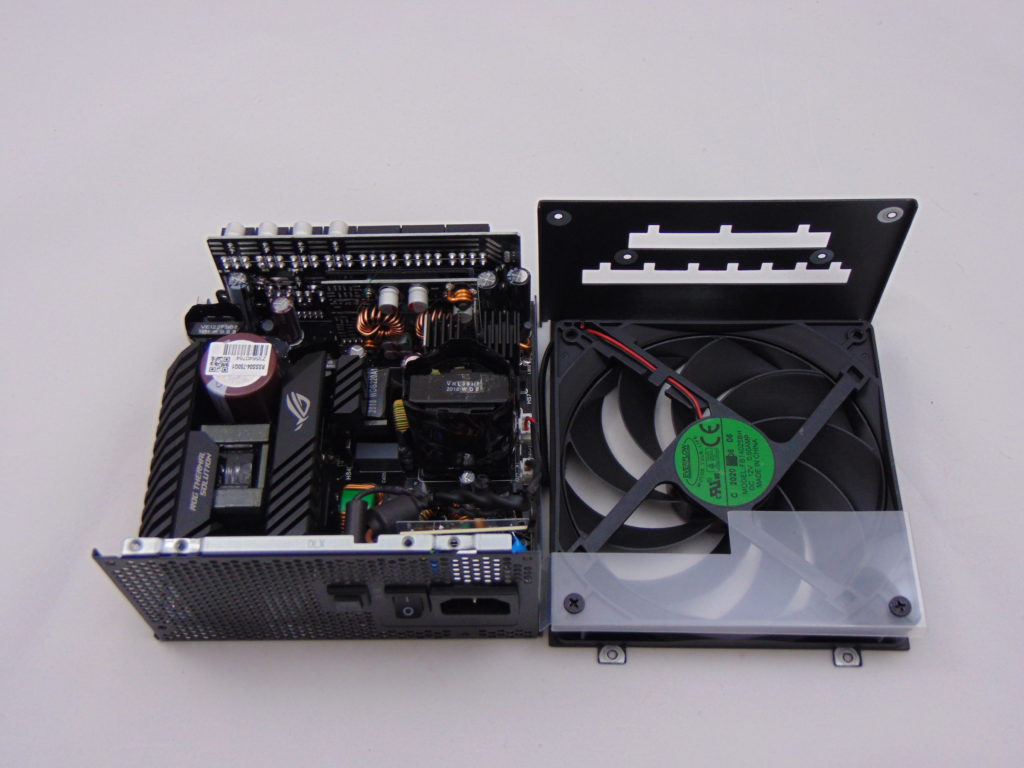
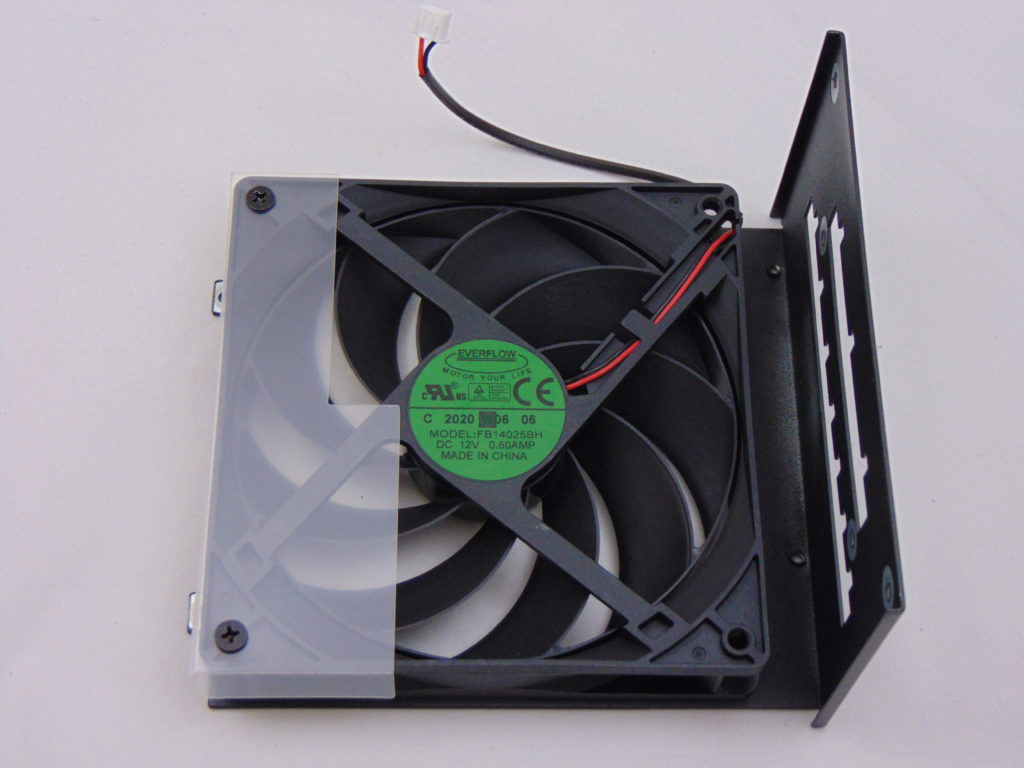
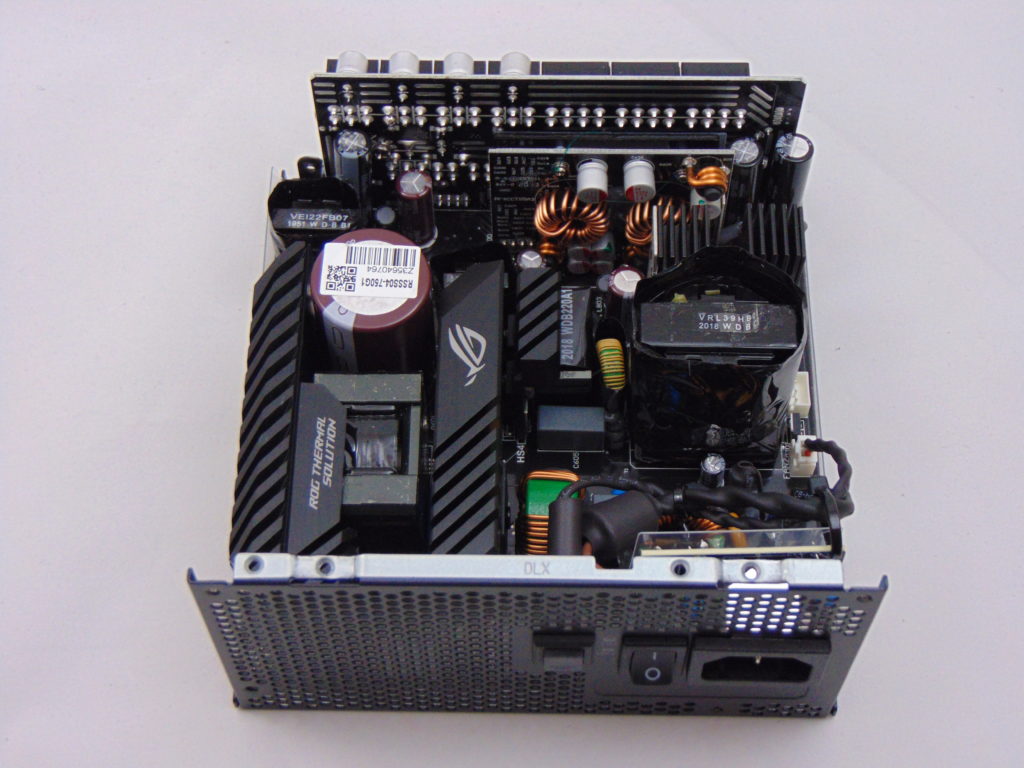
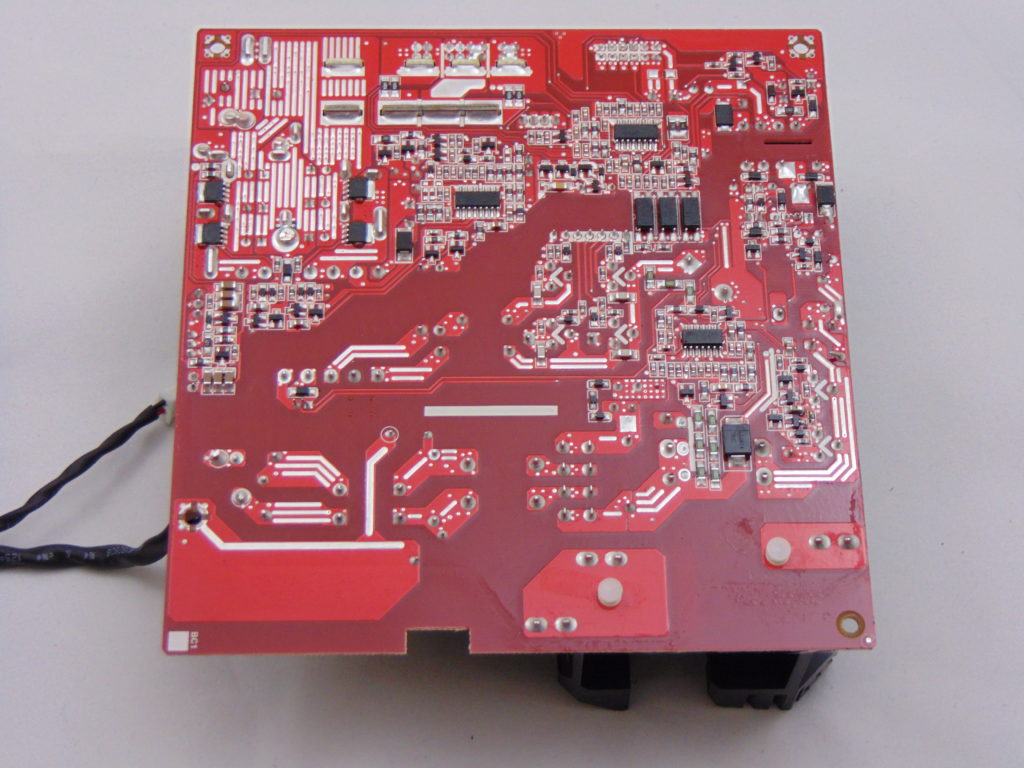
Once we open the top of the ASUS ROG STRIX 750W, we see a unit built by Seasonic. The topology has a full-bridge resonant LLC primary with a synchronous rectification secondary and DC-DC VRM’s for the minor rails. The fan cooling this unit today is, surprisingly, a dual ball bearing fan featuring ASUS’ axial technology. The fan is manufactured by Everflow and rated at 0.60A at 12v. It is paired with ASUS’s ROG thermal solution heatsinks which are twice the volume of the normal heatsinks in this design. So, rather than having one large heatsink and two very small heatsinks on the primary side along with two small heatsinks on the secondary side, we have a bunch of meaty heatsinks today. Lastly, the soldering is excellent on the very red PCB.
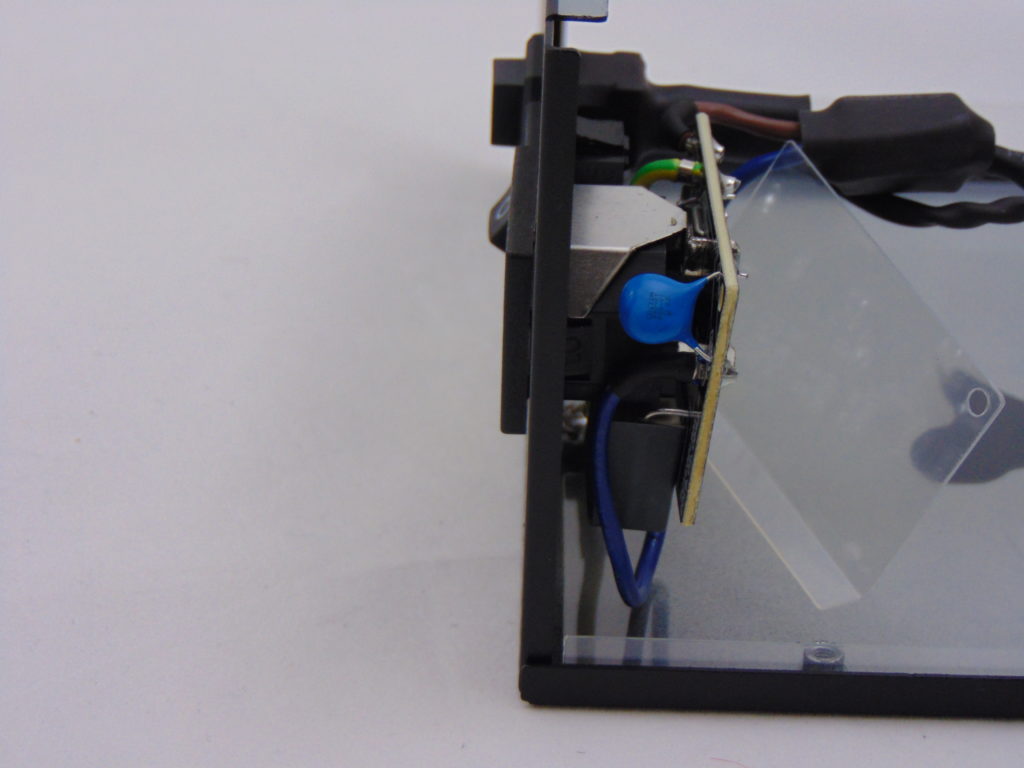
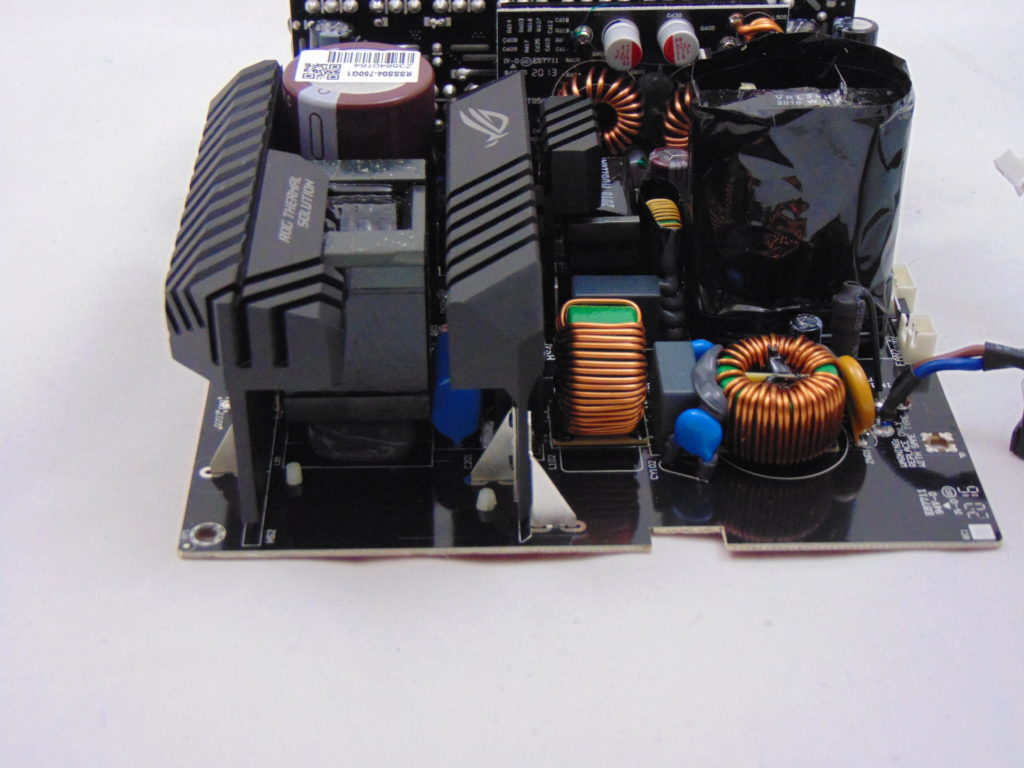
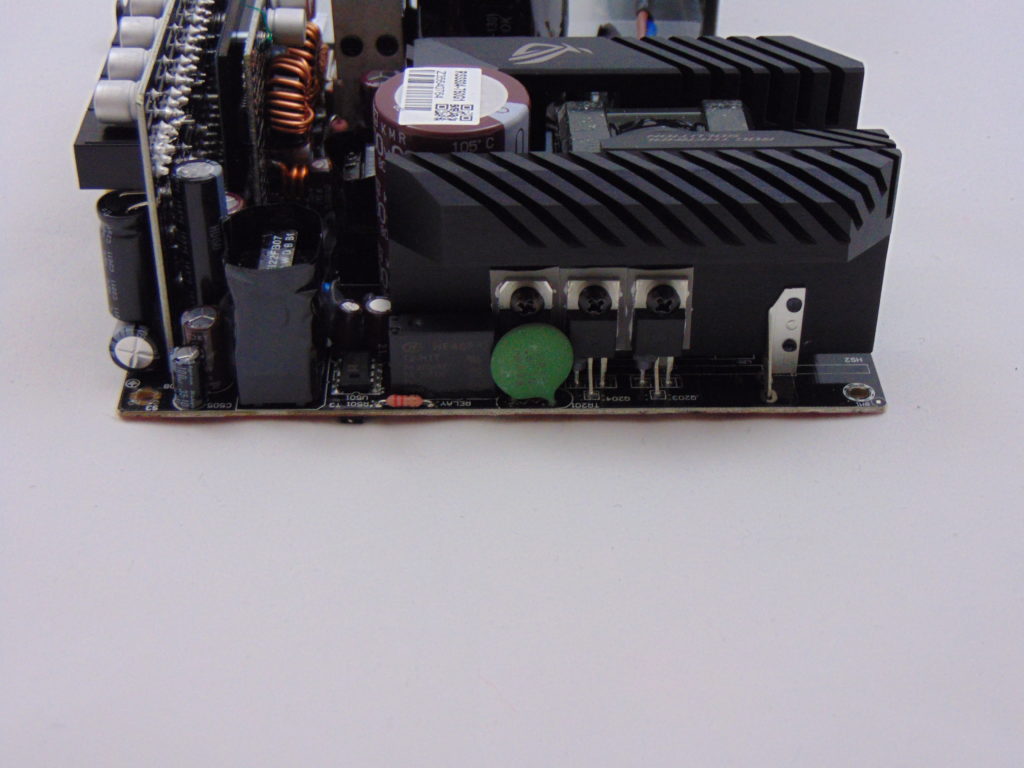

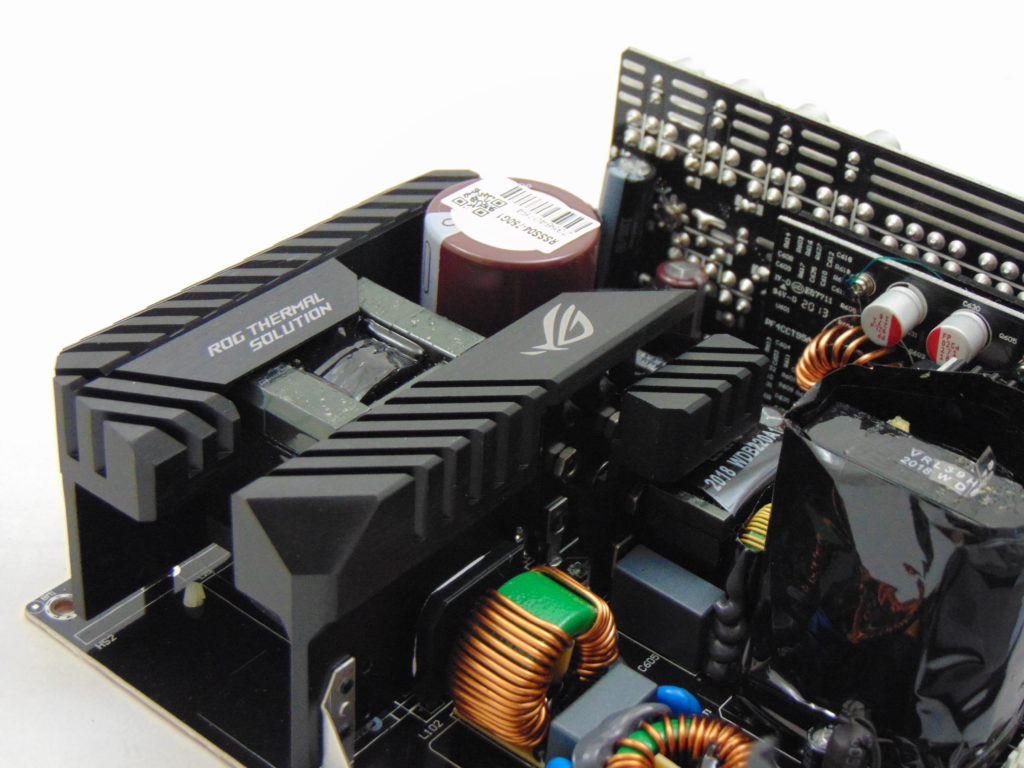
The ROG STRIX 750W input filtering begins up on the housing itself where we find a PCB with some X capacitors and Y capacitors. The balance of the input filtering is found on the back edge of the main PCB. There are then a pair of bridge rectifiers next in line attached to a very large heatsink. The APFC coil is next and it is followed by the APFC power components attached to the another substantial heatsink on the primary side. Speaking of this heatsink, the main input capacitor is right next to it and it is provided by Nippon Chemi-con with a rating of 400v 680uF 105C. This is a much larger capacitor than what we have seen on other 700W-750W units to date. The main switching transistors receive their own heatsinks as well and, in true ROG fashion, they are bigger than what we see on the base model from Seasonic.
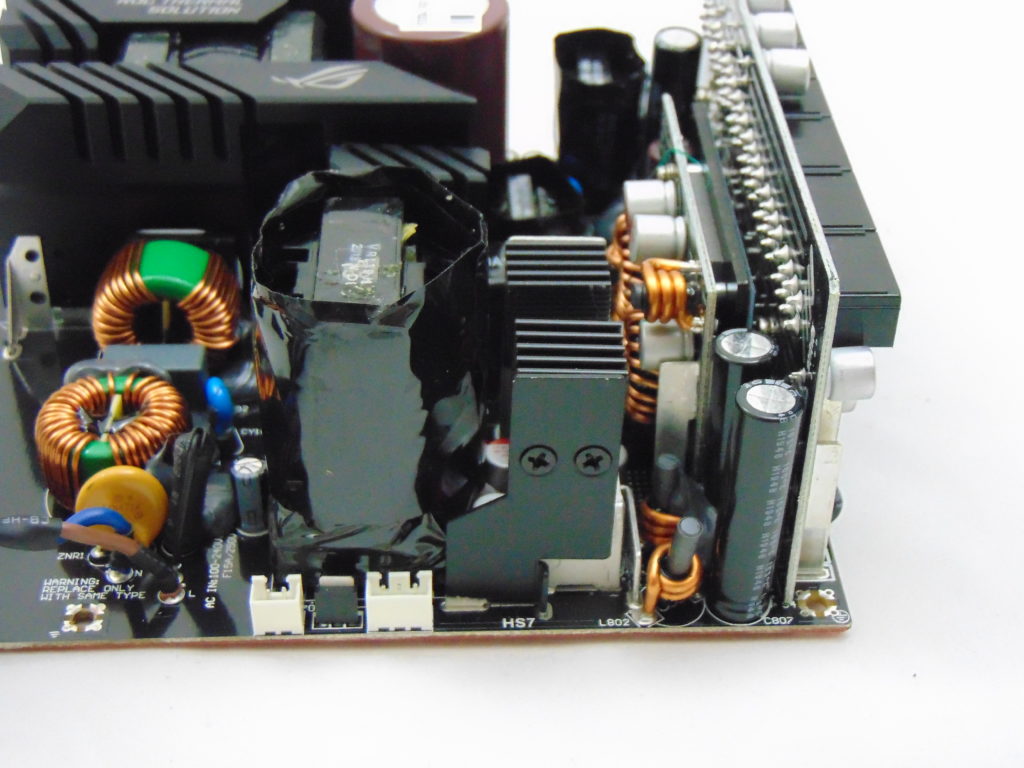

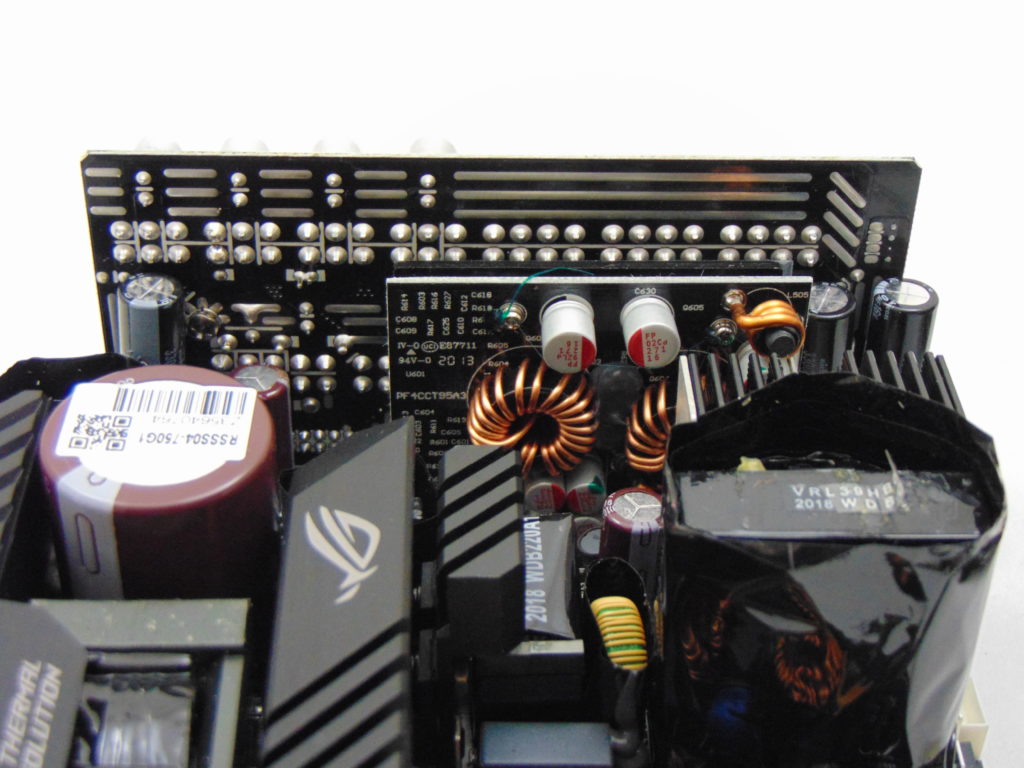

The secondary side of this unit looks about as crowded as the primary side largely due to the beefier than normal heatsinks here. Through the middle to the edge of the PCB, on the secondary side, we find the transformers with the main transformer being all the way to the edge of the PCB. In between these transformers and the DC-DC VRM PCB, we find a pair of decent sized heatsinks. These heatsinks are for cooling the 12v MOSFETS which were visible earlier on the solder side of the PCB.
Next to this, we find the DC-DC VRMs housed on their own PCB (populated by FPCAP solid capacitors as well as some oddball Chemi-con’s on the secondary as well) up against the modular PCB and edge of the main PCB. Around these PCB’s, we find a few standard electrolytics provided by Nippon Chemi-con and Nichicon. The modular PCB construction looks very nice and there are more FPCAP solid capacitors here as well as some more Nichicon wet electrolytics. Interestingly, there are no spots that are screened for more capacitors that are not populated but there is room for one more 8 pin connector that is not populated.
Build Quality Summary
Today’s ASUS ROG STRIX 750W is the second power supply we have seen from ASUS and it starts things off on the right foot just like the previous ROG THOR 850W did. Overall, the build quality looks excellent. The exterior is well done with real attention paid to nailing the branding of this unit and providing it with a real presence. The cables are a mix of standard wire loom and FlexForce style cables. The integration is excellent and the component selection is excellent as we see Rubycon, Nippon Chemi-con, and Nichicon standard capacitors as well as FPCAP solid capacitors. We also see ASUS putting their spin on this unit through the inclusion of their larger heatsinks that are part of their ROG Thermal Solution. On top of that, we see a dual ball bearing fan using ASUS’ axial design from Everflow cooling this unit. All in all, the ASUS ROG STRIX 750W is one of the most visually striking units we have seen and ASUS has done a solid job with their branding of the unit. Let’s move on now to the load tests and see how this unit performs!
